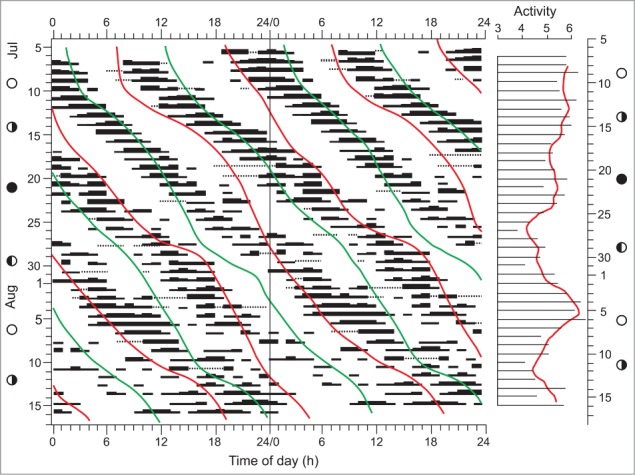Figure 1.

The perception of the passage of lunisolar time by a crab. Activity pattern (active period - black bars), recorded on an hourly basis over a period of 43 days during July-August 1963, of a single crab (Uca sp.) kept in constant low-level light in a laboratory at Woods Hole, CT, USA. The activity pattern drifts to the right, as though the activity time-keeper adheres to a 25-hour day. Superimposed on the activity pattern are the times of the contemporaneous lunisolar gravimetric high tides (red lines) and lunisolar low tides (green lines) for the location and dates in question. The transitions from inactivity to activity and vice versa are bounded by the times of high and low gravimetric tide (i.e., when each tide turns - commences descent from high tide or ascent from low tide). Lunar phases are shown on the left- and right-hand axes. Panel at the right-hand side is the √hours of cumulative daily activity of the crab, using a 3-d moving average. Activity is greater at Full and New Moon than at Quarter Moon. (Activity data from Fig. 4 of Barnwell151).
